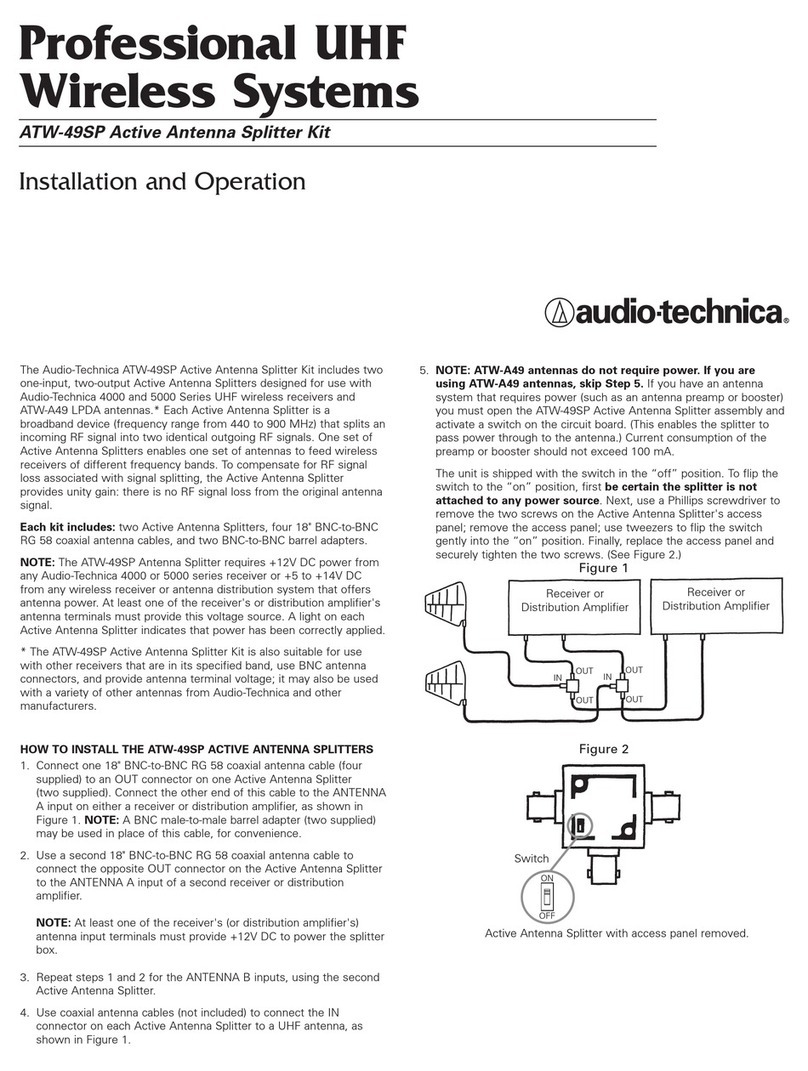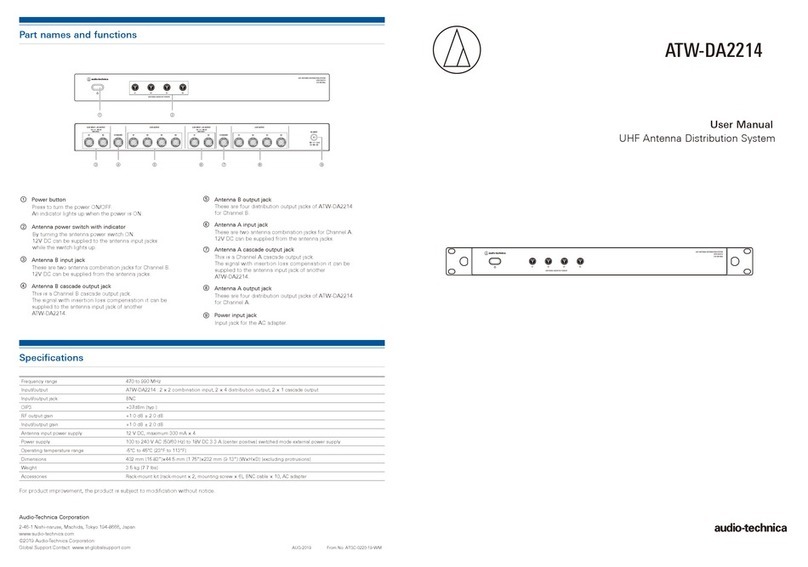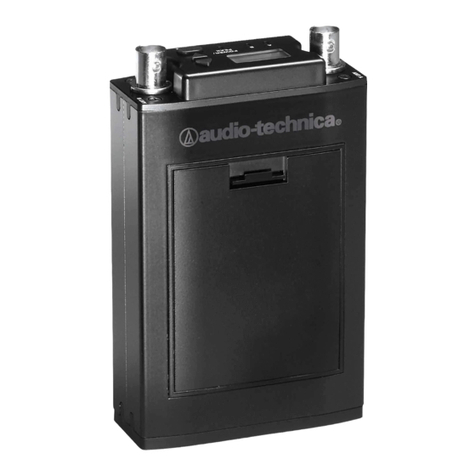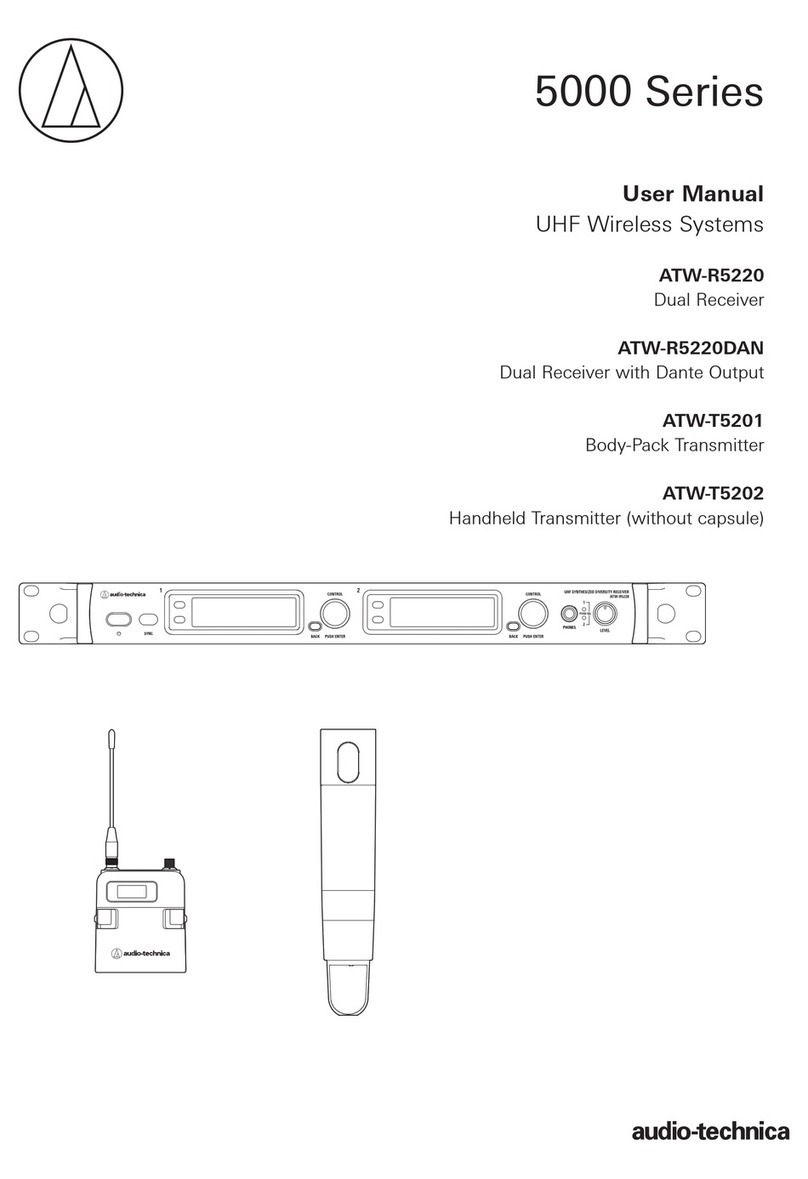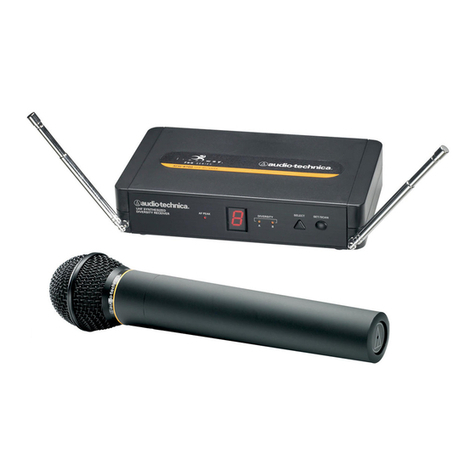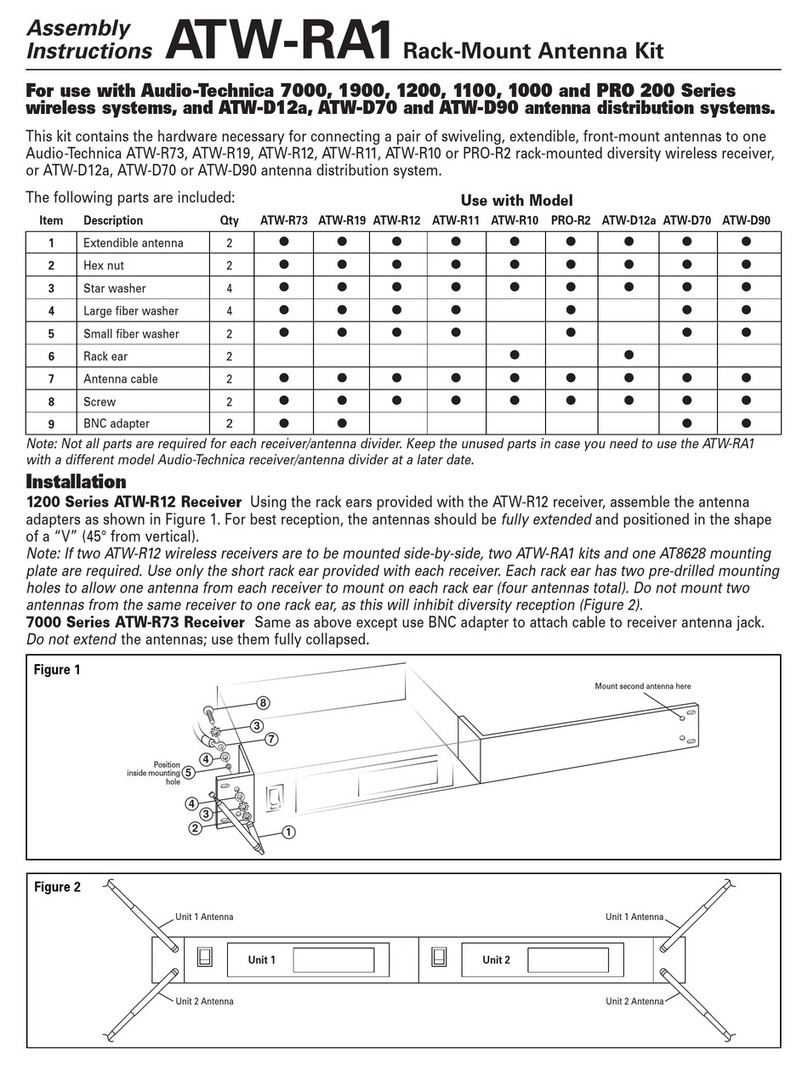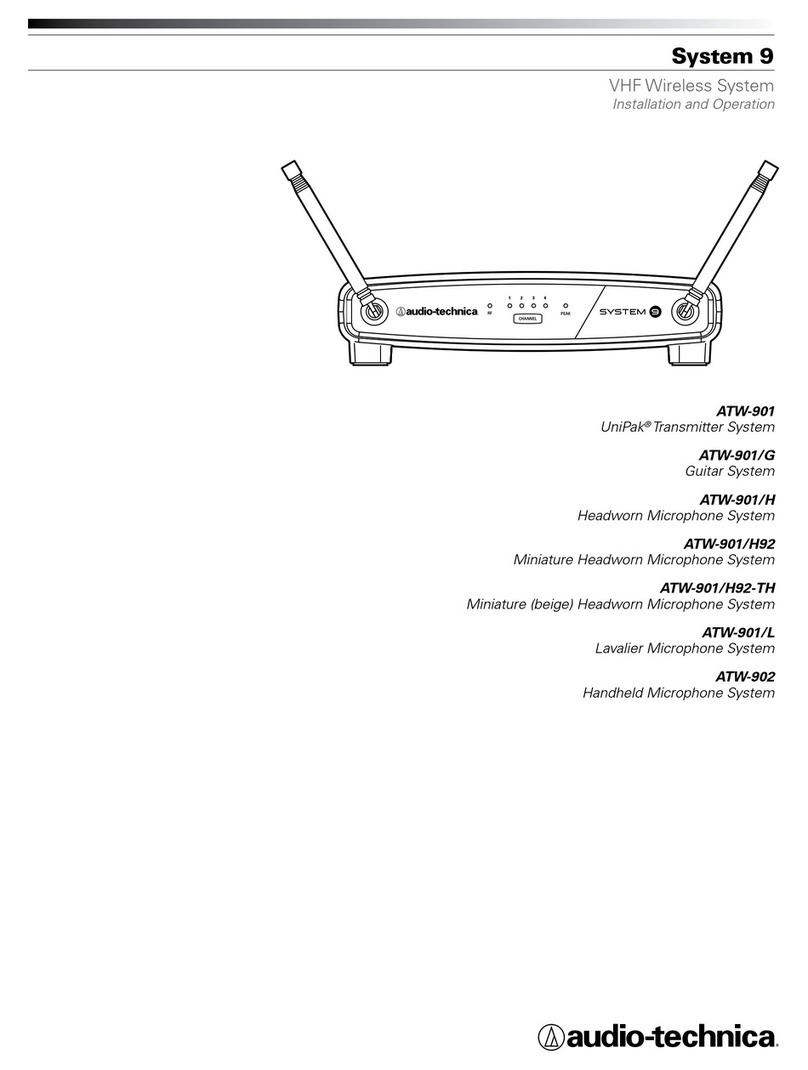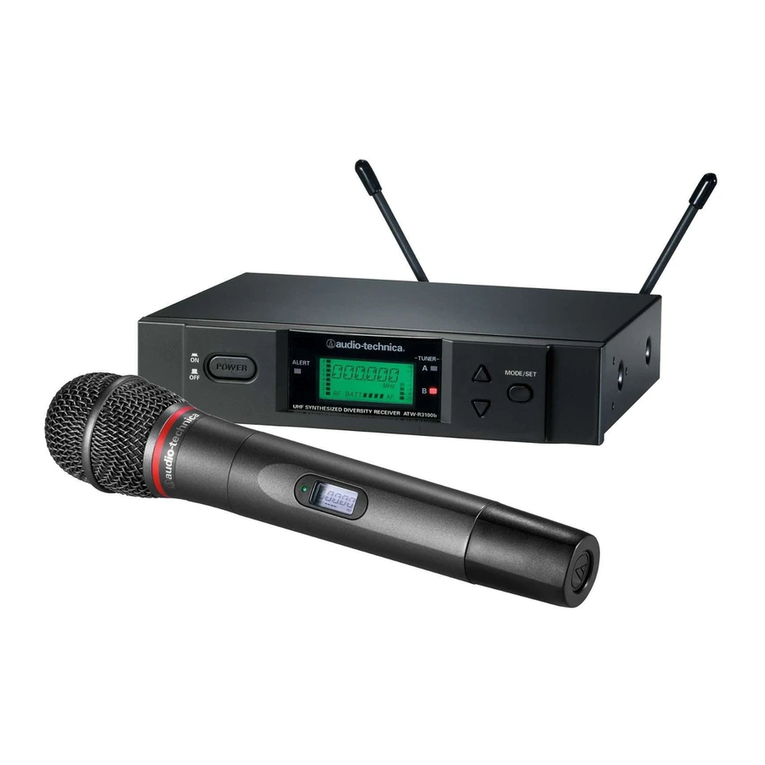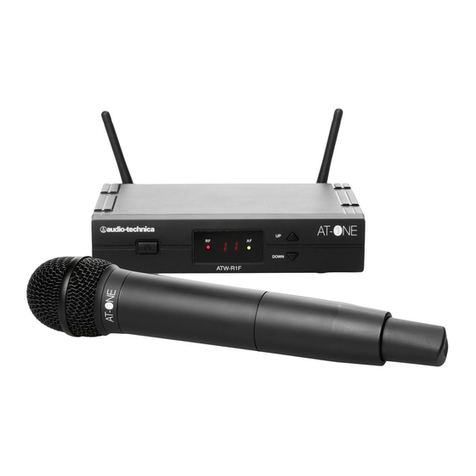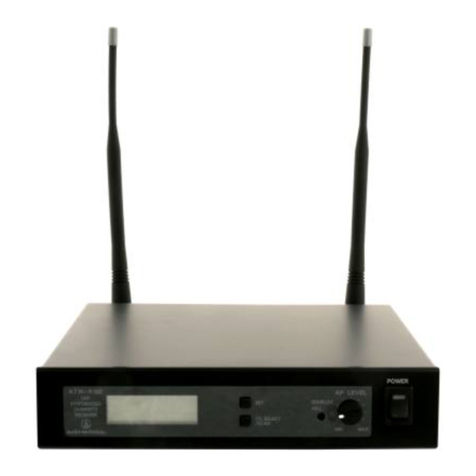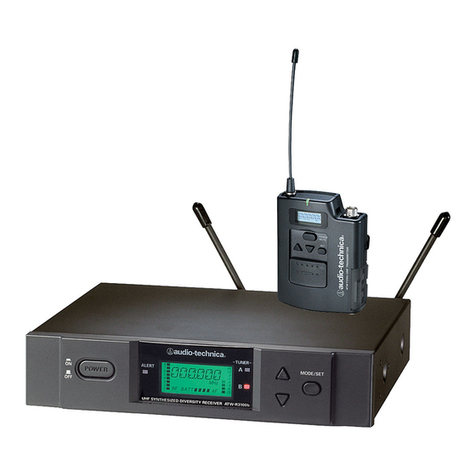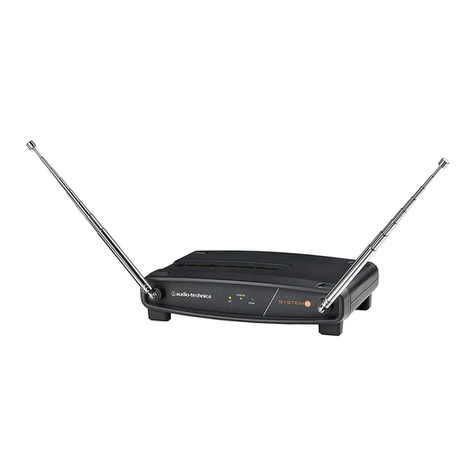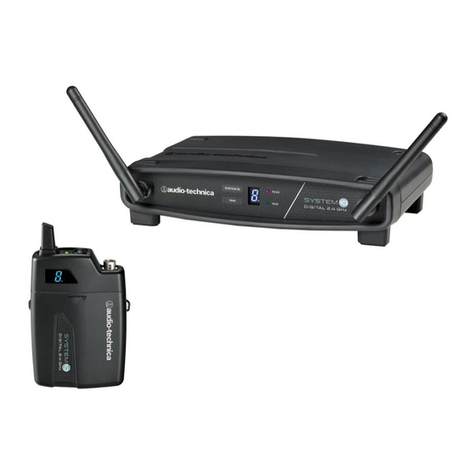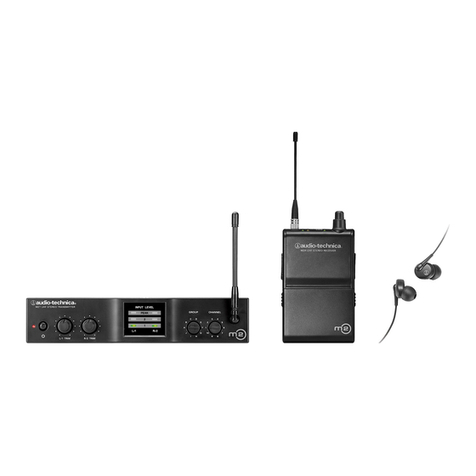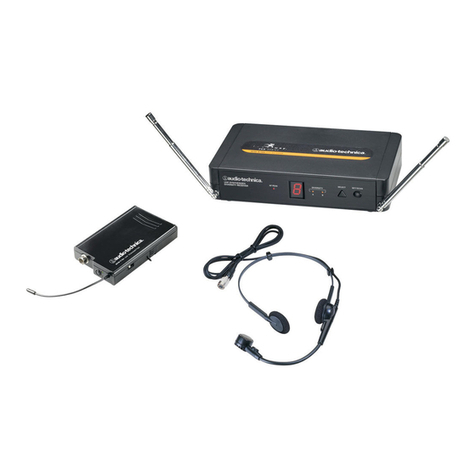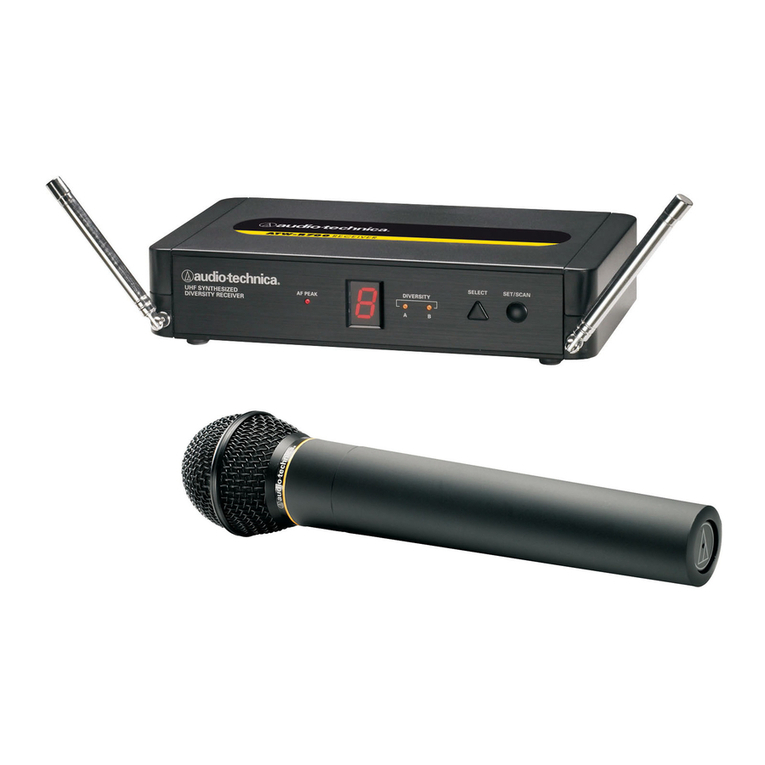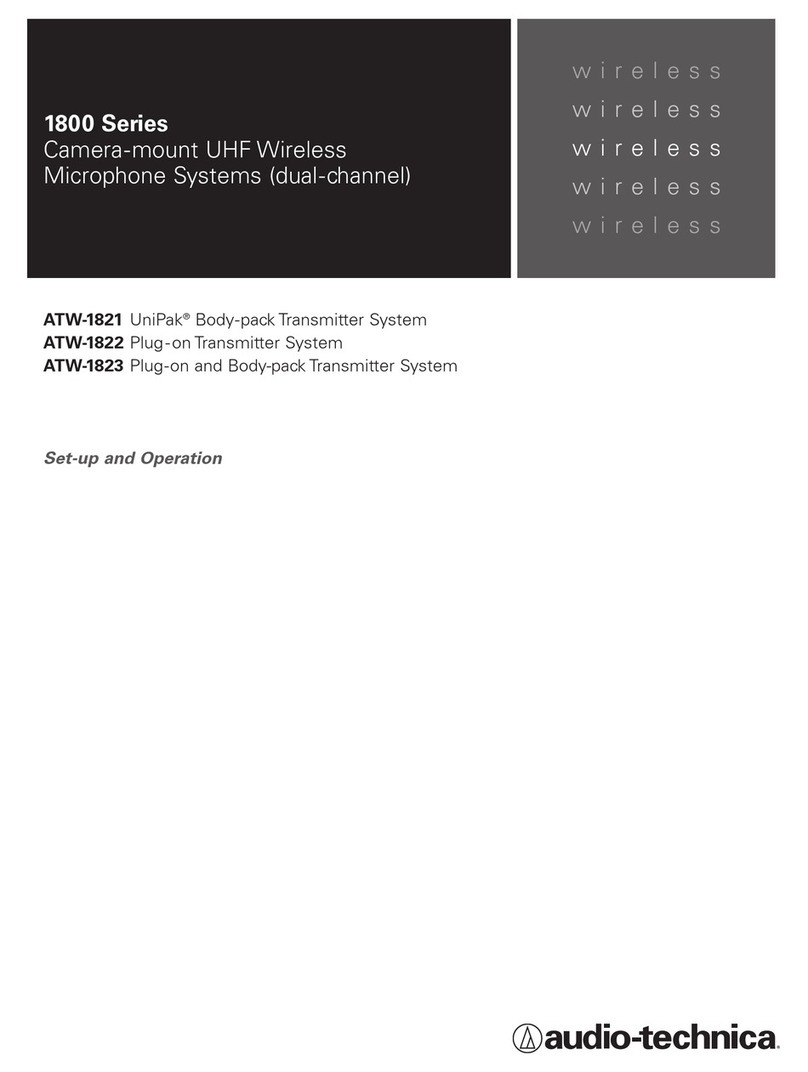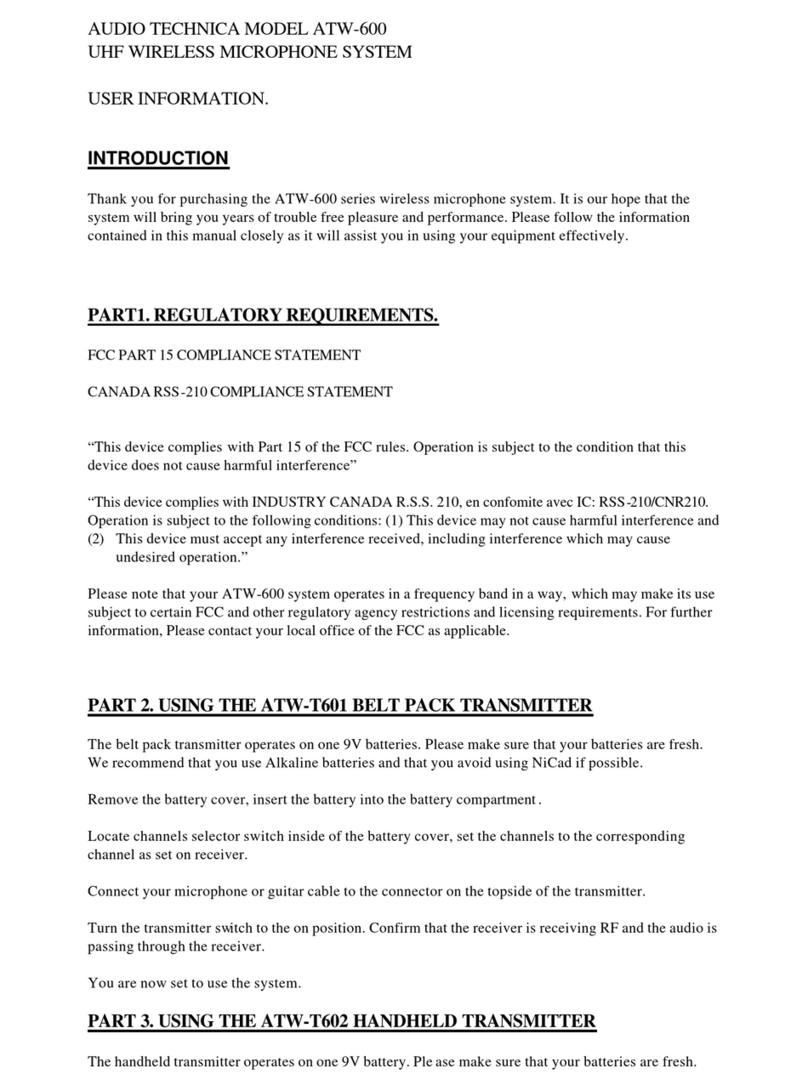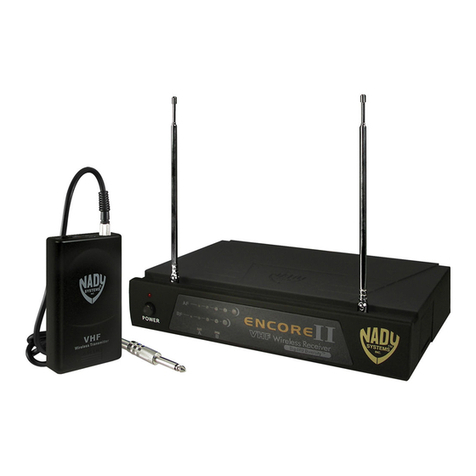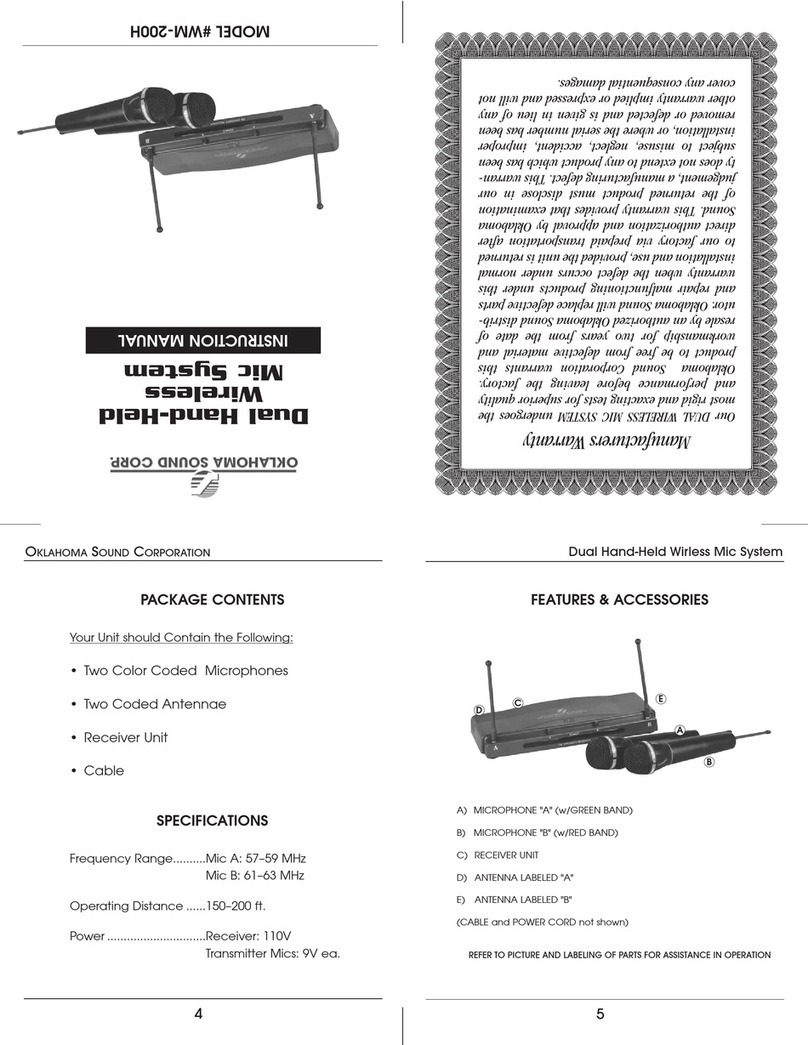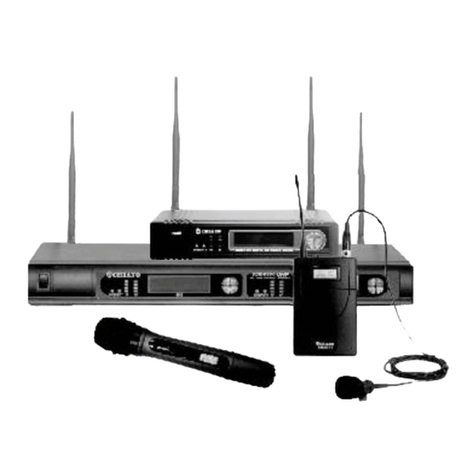
6
PWR.LOC Power is locked On as of the time “PWR.LOC”
is applied. The Mute functioning is unaffected.
Note: When in the PWR.LOC mode, the
transmitter may be turned off by: (1) Re-accessing
the .LOC Menu and changing the setting, or
(2) Removing and re-installing the batteries. When
the transmitter is turned on again, it will power-up
in the NO.LOC mode. (Only the PWR. LOC
function will change when batteries are removed;
all other settings remain stored in memory.)
If an attempt is made to take an action that currently is locked
out, the LCD will display “LOC.KED” briefly, then return to its
previously-displayed contents.
Audio Input Selector
The UniPak™ body-pack transmitter provides input connections
for both low-impedance (Lo-Z) microphones and high-impedance
(Hi-Z) instruments. A wide range of Audio-Technica Wireless
Essentials™ microphones and cables is available pre-terminated
with the appropriate professional latching connector. (See page 12.)
Selection of the desired input – microphone or instrument – is
made through the function menu. Depending upon the input
selected, a small “MIC” or “INST” will show in the LCD
window, just below the frequency. (In the handheld transmitter,
only “MIC” will show in the LCD window.)
Setting Audio Input Level for transmitters
ATW-T310 and ATW-T341 transmitter
A 4-position audio input gain setting, selected through the
function menu, serves to match the audio input level to the
transmitter for best modulation with minimum distortion.
Choices are +12 dB, +6 dB, 0 dB and -6 dB. (Default value:
+6 dB.) Select the highest setting that does not result in over-
modulation with the highest audio/instrument input levels (an AF
indication on the receiver no higher than “0”).
ATW-T371 transmitter
A 3-position audio input gain setting, selected through the
function menu, serves to match the audio input level to the
transmitter. Choices are +12 dB, +6 dB, and 0 dB. (Default
value: +6 dB.) In addition, a mechanical pad switch on the
condenser capsule (inside the screw-on wire mesh grille) can
provide another 6 dB of attenuation. For best performance,
adjust the input level using the function menu choices, keeping
the capsule's mechanical switch at 0 dB. If more audio
attenuation is needed, set the capsule's pad switch to -6 dB.
Restore Default Settings
A “PRESET” selection in the menu permits resetting of all
transmitter functions to their factory-default values.
1. Press the Set button once to move to Menu mode.
2. Press the Up arrow twice to move to “PRESET” in the
LCD window.
3. Press the Set button once and “LOAD” will appear in the
LCD.
4. Press and hold the Set button until “DEF” appears in the
LCD.
5. Press and hold the Set button until “LOADED” appears
briefly in the LCD. The window will then revert to
“PRESET”.
6. Press the Down arrow once to move to “QUIT”.
7. Press the Set button once to exit the Menu mode and
return to normal operation, with all factory-default settings
restored.
Refer to Figures E, F, G and H on pages 18 and 19 for an
overview of transmitter features and controls.
LCD Window
The Liquid Crystal Display presents a great deal of setup and
operating information clearly and conveniently (See examples
in Fig. J). The LCD in the transmitters is designed for greatest
contrast and best viewing with the window rotated somewhat
away from the viewer (about 30 degrees), not straight-on, for
a more convenient holding/viewing position.
Power/Mute Button
The transmitters have a combination Power and Mute switch.
When used in combination with the programmed choices
explained below, the various functions available to the
transmitter user may be tailored to fit personal preferences
or particular situations of use.
Power On/Off
To turn the transmitter on, press and hold the Power/Mute
button until the red power indicator and the LCD window come
on (about 1-2 seconds). The operating frequency will show in
the window after the power-up sequence.
To turn the transmitter off, press and hold the Power/Mute
button again, until the red power indicator and the LCD window
are extinguished (about 1-2 seconds). The LCD window will
show “PWR.OFF” before shutdown.
Mute Off/On
When the transmitter is muted, it produces RF with no audio
signal modulation. When the transmitter is un-muted, it
produces both RF and audio.
To mute the transmitter (cut off the audio, but continue the RF
output), press and release the Power/Mute button once. A
small “MUTE” will appear in the LCD window, just below the
frequency (Fig. J-2).
To un-mute the transmitter (restore the audio), press and
release the Power/Mute button once again. The “MUTE” will
disappear from the LCD window.
Power/Mute Locks
Programmable Power/Mute Locks limit the functioning of the
Power/Mute button as desired for particular users and/or
applications. Power can be locked On; Mute can be locked Off.
Selection of the desired locks, if any, is made through the
function menu:
Setting Description
NO.LOC The normal Power and Mute functions are fully
operational.
ALL.LOC Both the Power and Mute functions are locked
into their status as of the time “ALL.LOC” is
applied. (Power On, and Mute either On or Off.)
Note: ALL.LOC must be re-accessed and the
setting changed to turn the transmitter off.
MUT.LOC In this mode, the audio cannot be muted. The
Power functioning is unaffected. (If MUT.LOC is
applied while the transmitter is muted, pressing
the Power/Mute button once will return to
un-muted operation; thereafter the Mute function
is disabled until the setting is changed again.)
Transmitter Controls And Functions
